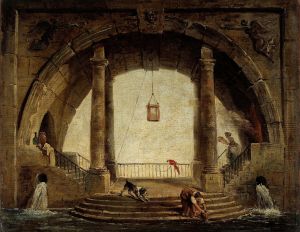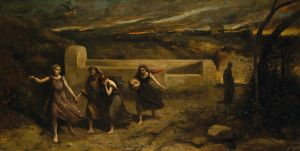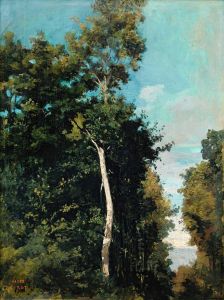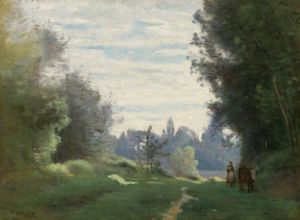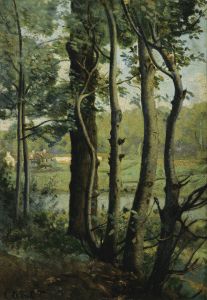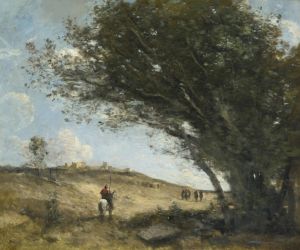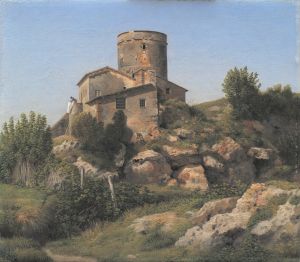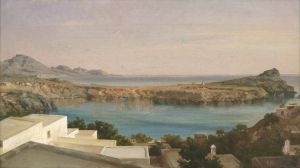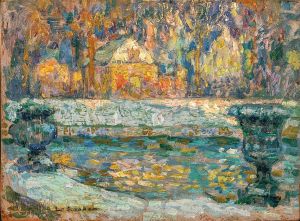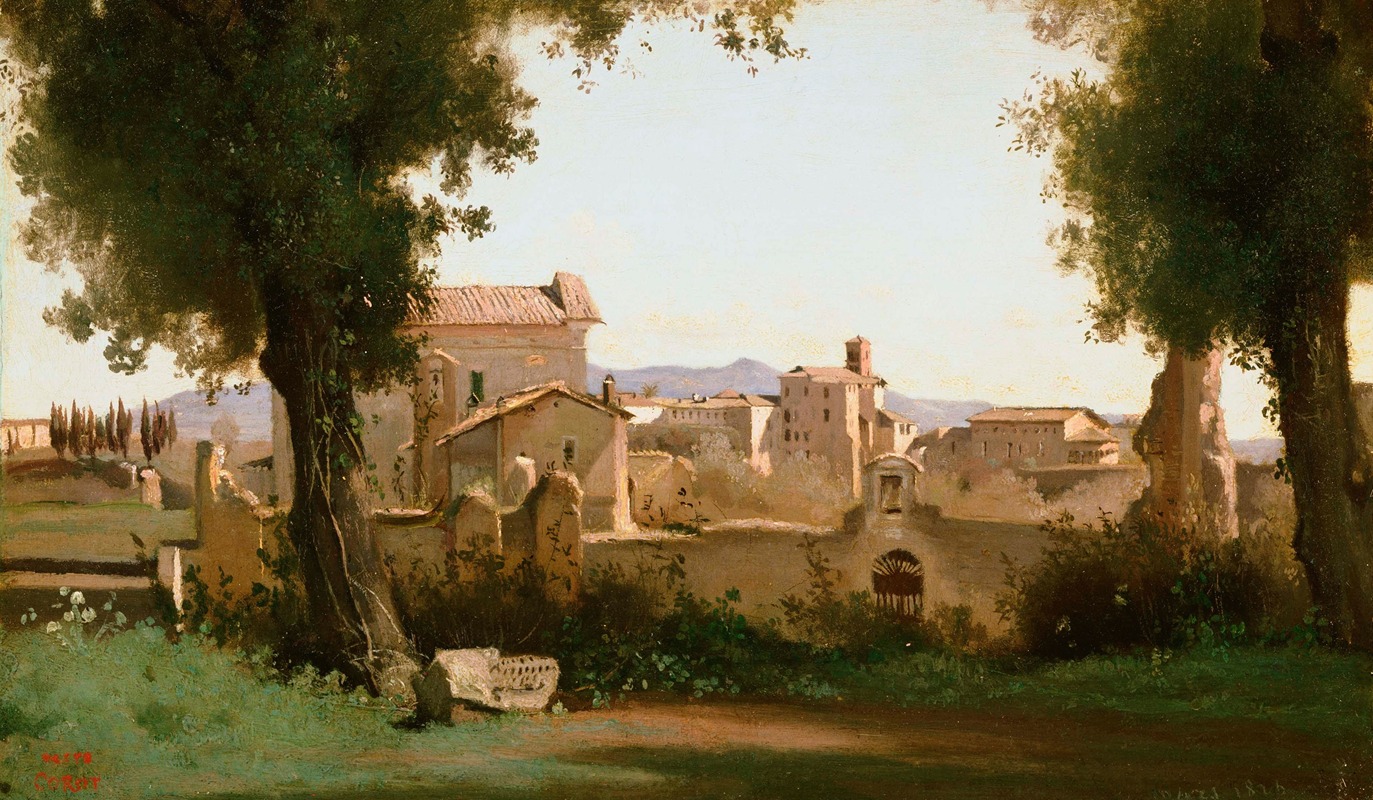
View from the Farnese Gardens, Rome
A hand-painted replica of Jean-Baptiste-Camille Corot’s masterpiece View from the Farnese Gardens, Rome, meticulously crafted by professional artists to capture the true essence of the original. Each piece is created with museum-quality canvas and rare mineral pigments, carefully painted by experienced artists with delicate brushstrokes and rich, layered colors to perfectly recreate the texture of the original artwork. Unlike machine-printed reproductions, this hand-painted version brings the painting to life, infused with the artist’s emotions and skill in every stroke. Whether for personal collection or home decoration, it instantly elevates the artistic atmosphere of any space.
Jean-Baptiste-Camille Corot was a prominent French landscape painter and a pivotal figure in the transition from traditional Neoclassical painting to the plein-air techniques that would later define Impressionism. One of his notable works is "View from the Farnese Gardens, Rome," which exemplifies his skill in capturing the essence of a landscape with a delicate balance of light, atmosphere, and form.
"View from the Farnese Gardens, Rome" was painted during Corot's first trip to Italy, which took place between 1825 and 1828. This period was crucial for Corot, as it allowed him to study the works of the Old Masters and immerse himself in the Italian landscape, which greatly influenced his artistic development. The Farnese Gardens, located on the Palatine Hill in Rome, offered a vantage point with sweeping views of the city, making it a popular spot for artists seeking to capture the grandeur of Rome's ancient and Renaissance architecture.
In this painting, Corot demonstrates his ability to blend the classical with the natural. The composition is carefully structured, with the foreground featuring lush greenery and the middle ground opening up to a panoramic view of Rome. The distant cityscape is rendered with a soft, atmospheric perspective, a technique Corot mastered to convey depth and the play of light across the landscape. The painting reflects Corot's interest in capturing the transient effects of light and atmosphere, a hallmark of his later work.
Corot's palette in "View from the Farnese Gardens, Rome" is characterized by muted earth tones and soft greens, which lend a serene and timeless quality to the scene. This restrained use of color is typical of Corot's early work, where he focused on tonal harmony and subtle gradations of light and shadow. The painting's tranquil mood and balanced composition reflect the influence of Neoclassical principles, yet Corot's approach to capturing the natural world hints at the emerging Romantic sensibilities of the time.
Corot's time in Italy, and particularly his work in Rome, was instrumental in shaping his artistic vision. The experience allowed him to refine his plein-air techniques, which involved painting outdoors to directly observe and capture the effects of natural light. This approach was relatively novel at the time and laid the groundwork for the Impressionist movement that would follow in the latter half of the 19th century.
"View from the Farnese Gardens, Rome" is not only a testament to Corot's technical skill but also an example of his ability to convey a sense of place and atmosphere. The painting is a reflection of Corot's deep appreciation for the Italian landscape and his commitment to portraying it with authenticity and sensitivity. Today, Corot is celebrated as a master of landscape painting, and works like "View from the Farnese Gardens, Rome" continue to be admired for their beauty and influence on subsequent generations of artists.





